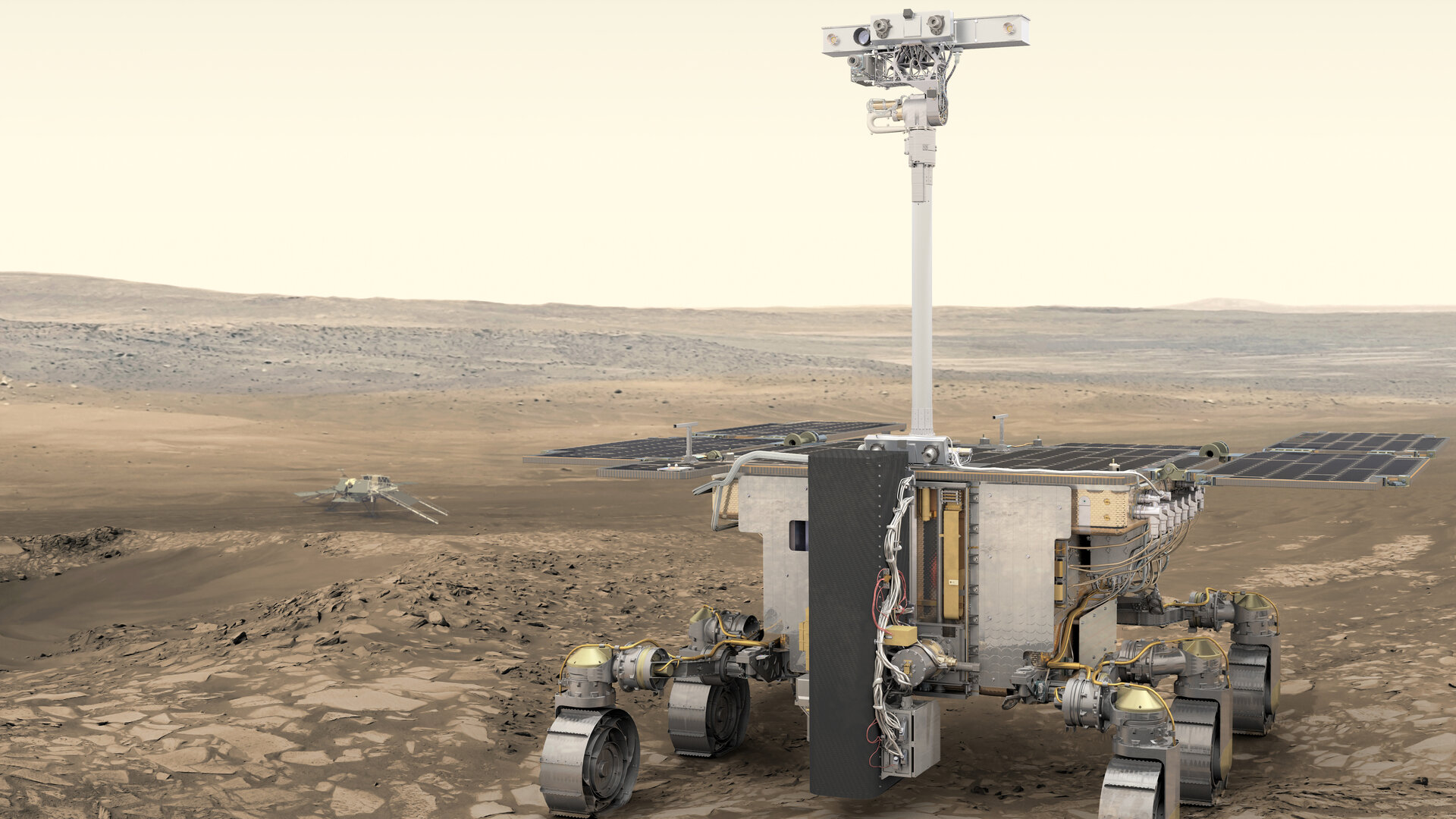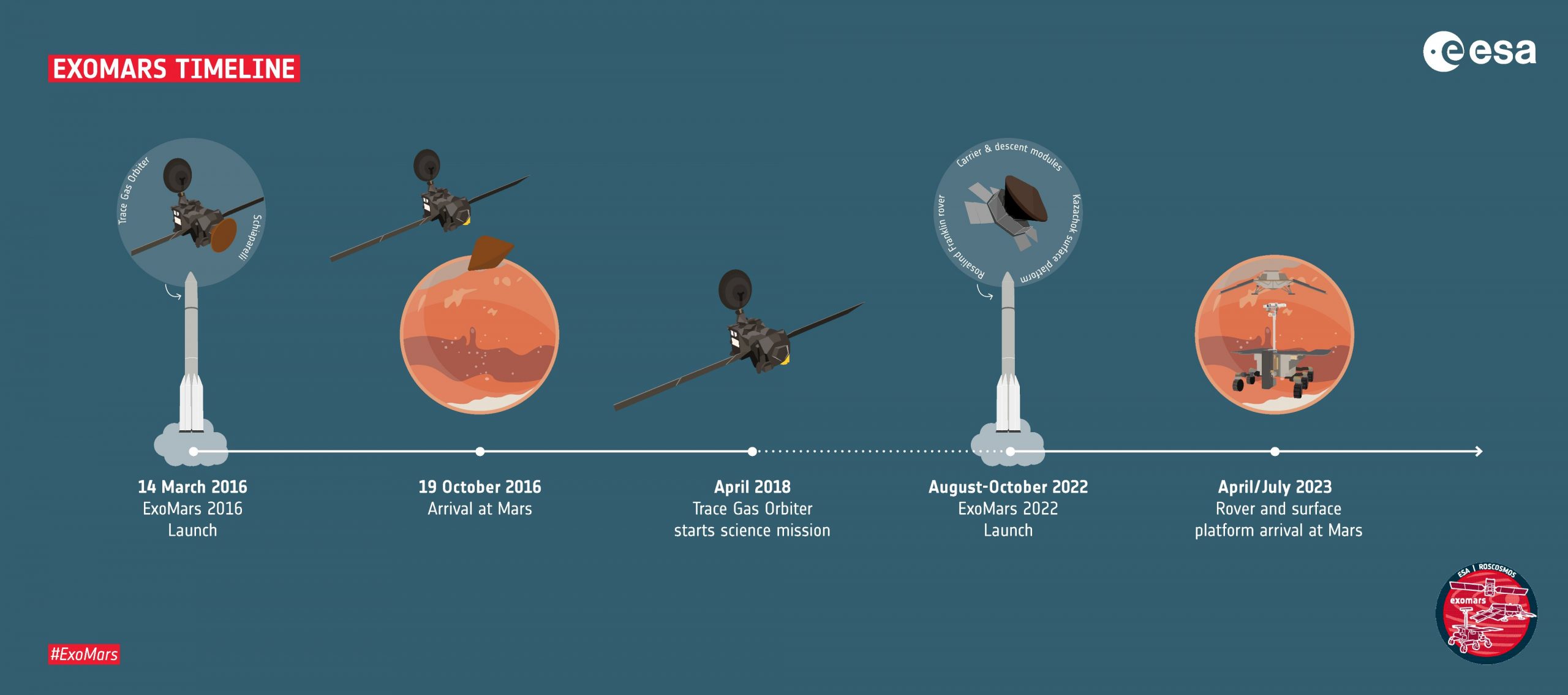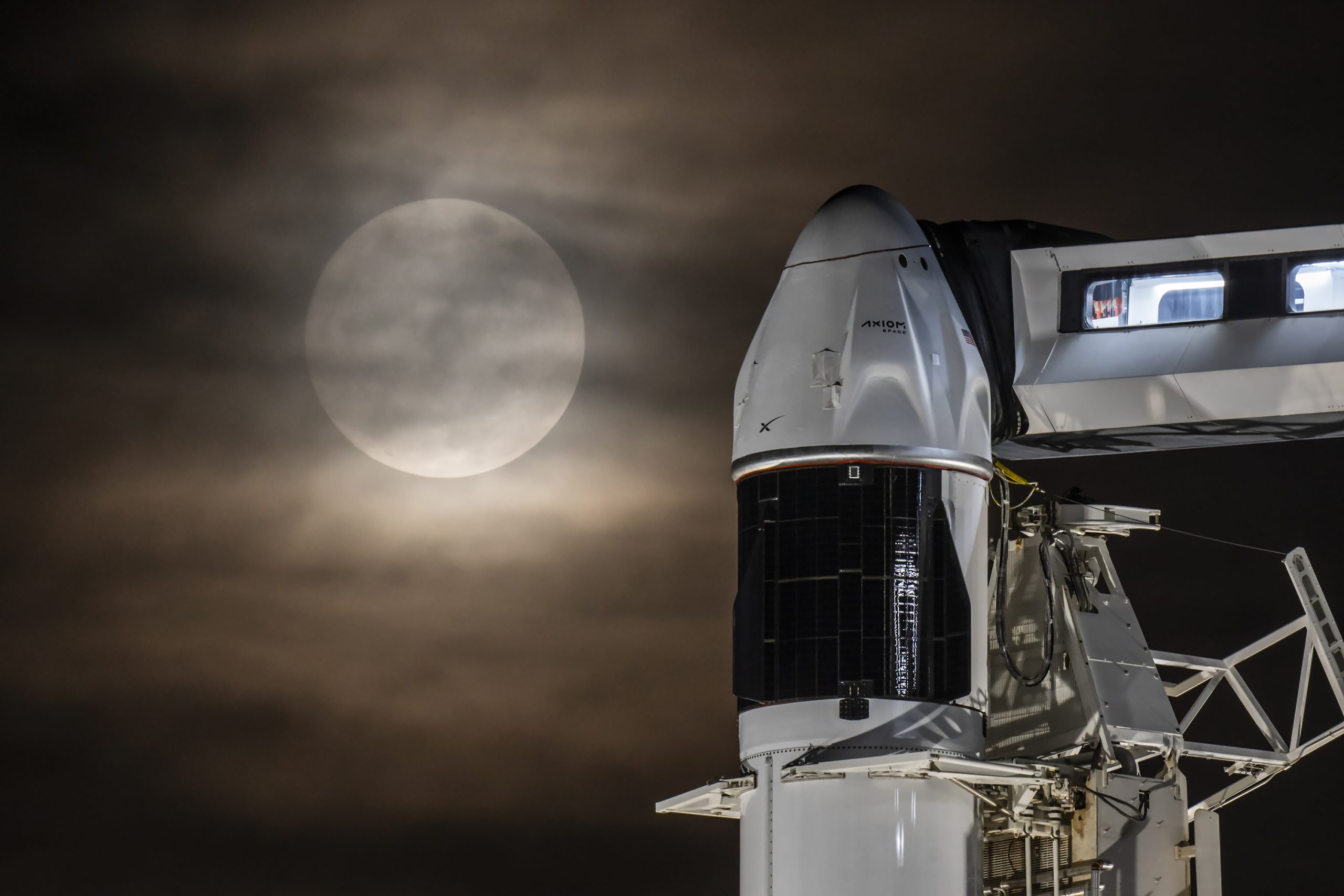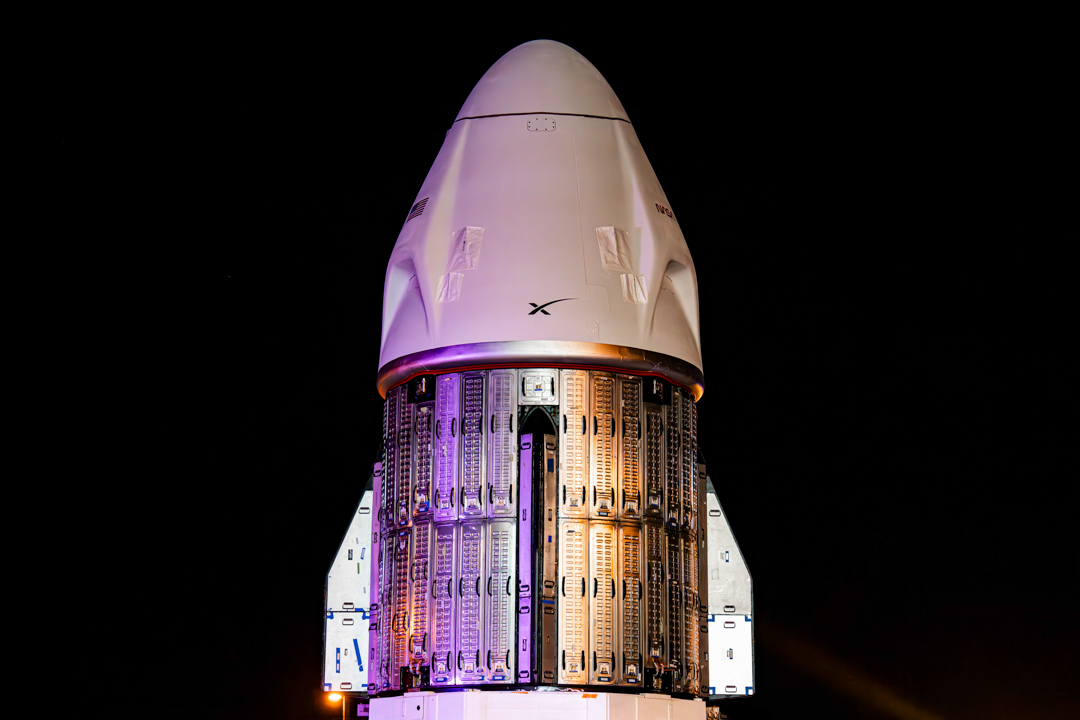

Space
Europe postpones Mars mission over ExoMars rover issue and Coronavirus
The European Space Agency (ESA) announced that its ExoMars rover would not fly this year. The mission, a collaboration with the Russian Space Agency (Roscosmos), was set to launch this summer. However, the launch has been postponed to 2022 due to technical issues and the logistical impact due to the global Conoavirus outbreak.
“This is a very tough decision, but it’s, I’m sure, the right one,” ESA Director General Jan Wörner said during a news conference at ESA’s headquarters in Paris after consulting with the head of Roscosmos, Dmitry Rogozin. “The parties had to recognise that the final phase of ExoMars activities are compromised by the general aggravation of the epidemiological situation in European countries.”
“We agreed together it’s better to go for success than just to go for launch at this time,” Wörner said. “Although we are close to launch readiness, we cannot cut corners. Launching this year would mean sacrificing remaining essential tests.”
The ExoMars rover is Europe’s first Mars rover. Named after Rosalind Franklin, a British pioneer of DNA science, the robotic explorer will search for signs of life on the red planet’s surface. Wörner said the agency needs more time to troubleshoot issues with the spacecraft’s parachute system as well as precise electronics, so the delay is necessary.
Also, the recent coronavirus outbreak that’s spreading around the globe isn’t helping. So instead of rushing, the team is taking the next two years to conduct extensive testing and make sure they get it right.

“We have made a difficult but well-weighed decision to postpone the launch to 2022,” Rogozin said in a statement. “I am confident that the steps that we and our European colleagues are taking to ensure mission success will be justified and will unquestionably bring solely positive results for the mission implementation.”
The ExoMars rover is a follow-on to ESA’s ExoMars Orbiter mission, which reached the red planet in 2016. That mission consisted of two parts: the Trace Gas Orbiter (TGO) and the Schiaparelli lander, a technology demonstrator. Unfortunately, the Schiaparelli crash-landed during its descent to the Martian surface.
Landing a spacecraft on Mars is hard. The planet’s atmosphere is thinner than what we see on Earth, and as such its takes a combination of sophisticated tools, including heat shields, retrorockets, and even giant, inflatable airbags, to safely touch down on the surface.
If anyone of those techniques fails, the spacecraft will crash, which is what happened with Schiaparelli.
Despite being around for decades, parachutes are still pretty tricky, especially using them on another planet. ESA engineers have made many adjustments to the parachute system, but keep seeing the same result: they rip as soon as they deploy. Test, after test, the chutes failed. Engineers have tried reinforcing them with Teflon to make them slide out of their bags easier, but no luck.
ESA even tried to seek advice from NASA’s Jet Propulsion Laboratory, which has built every single rover on Mars and, unfortunately needs more time to collaborate on parachute design. Because there’s only a limited window of launch opportunity, ESA officials decided to make the tough call to postpone until the next Mars window opens in 2022.
Appreciate @esa and @roscosmos for making the tough decision to postpone @ESA_ExoMars to 2022. Launching & safely landing a spacecraft on Mars are extremely demanding and require many technologies & systems to function perfectly. Your work is inspiring everyone to do hard things. https://t.co/ttPzDyQJWa
— Thomas Zurbuchen (@Dr_ThomasZ) March 12, 2020
The rover and its launcher, a Russian Proton rocket, are ready to go. The agency has more parachute tests in the works, including high-altitude drops.
Additionally, Wörner said the team discovered issues with the descent module’s electronic equipment, which are essential to the mission’s success. This piece of equipment controls functions like spacecraft power, propulsion, and even parachute control. It will take some time for the bugs to be fixed.
“Due to the troubleshooting of these anomalies at system level, the final version of the flight software has been delayed, and there is not enough time to fully test it before a 2020 launch and gain the confidence we need,” Wörner said.
You can technically launch to Mars anytime, but space agencies around the world choose specific windows that open every two years. During this time, Mars and Earth are in line, so that it takes less time and uses less fuel. In 2022, that window is open from August to October.
Once it reaches the Martian surface, the rover will study an ancient lake bed. It will scour the red planet’s surface in search of biosignatures, or signs of life.
News
SpaceX Ax-4 Mission prepares for ISS with new launch date
SpaceX, Axiom Space, and NASA set new launch date for the Ax-4 mission after addressing ISS & rocket concerns.

SpaceX is preparing for a new launch date for the Ax-4 mission to the International Space Station (ISS).
SpaceX, Axiom Space, and NASA addressed recent technical challenges and announced a new launch date of no earlier than Thursday, June 19, for the Ax-4 mission. The delay from June 12 allowed teams to assess repairs to small leaks in the ISS’s Zvezda service module.
NASA and Roscosmos have been monitoring leaks in the Zvezda module’s aft (back) segment for years. However, stable pressure could also result from air flowing across the hatch seal from the central station. As NASA and its partners adapt launch schedules to ensure station safety, adjustments are routine.
“Following the most recent repair, pressure in the transfer tunnel has been stable,” a source noted, suggesting the leaks may be sealed.
“By changing pressure in the transfer tunnel and monitoring over time, teams are evaluating the condition of the transfer tunnel and the hatch seal between the space station and the back of Zvezda,” the source added.
SpaceX has also resolved a liquid oxygen leak found during post-static fire inspections of the Falcon 9 rocket, completing a wet dress rehearsal to confirm readiness. The Ax-4 mission is Axiom Space’s fourth private astronaut trip to the ISS. It will launch from NASA’s Kennedy Space Center in Florida on a Falcon 9 rocket with a new Crew Dragon capsule.
“This is the first flight for this Dragon capsule, and it’s carrying an international crew—a perfect debut. We’ve upgraded storage, propulsion components, and the seat lash design for improved reliability and reuse,” said William Gerstenmaier, SpaceX’s vice president of build and flight reliability.
The Ax-4 mission crew is led by Peggy Whitson, Axiom Space’s director of human spaceflight and former NASA astronaut. The Ax-4 crew includes ISRO astronaut Shubhanshu Shukla as pilot, alongside mission specialists Sławosz Uznański-Wiśniewski from Poland and Tibor Kapu from Hungary. The international team underscores Axiom’s commitment to global collaboration.
The Ax-4 mission will advance scientific research during its ISS stay, supporting Axiom’s goal of building a commercial space station. As teams finalize preparations, the mission’s updated launch date and technical resolutions position it to strengthen private space exploration’s role in advancing space-based innovation.
News
Starlink India launch gains traction with telecom license approval
Starlink just secured its telecom license in India! High-speed satellite internet could go live in 2 months.

Starlink India’s launch cleared a key regulatory hurdle after securing a long-awaited license from the country’s telecom ministry. Starlink’s license approval in India paves the way for commercial operations to begin, marking a significant milestone after a three-year wait.
The Department of Telecommunications granted Starlink a Global Mobile Personal Communication by Satellite (GMPCS) license, enabling it to roll out its high-speed internet service. Local reports hinted that Starlink plans to launch its services within the next two months. Starlink India’s services are expected to be priced at ₹3,000 per month for unlimited data. Starlink service would require a ₹33,000 hardware kit, including a dish and router.
“Starlink is finally ready to enter the Indian market,” sources familiar with the rollout plans confirmed, noting a one-month free trial for new users.
Starlink’s low-Earth orbit satellite network promises low-latency, high-speed internet that is ideal for rural India, border areas, and hilly terrains. With over 7,000 satellites in orbit and millions of global users, Starlink aims to bridge India’s digital divide, especially in areas with limited traditional broadband.
Starlink has forged distribution partnerships with Indian telecom giants Reliance Jio and Bharti Airtel to streamline deployment and retail logistics. However, the company still awaits spectrum allocation and final clearances from India’s space regulator, IN-SPACe, and national security agencies before its full launch, expected before August 2025.
India’s satellite internet market is becoming increasingly competitive, with Starlink joining rivals like OneWeb and Jio Satellite Communications. While Starlink positions itself as a premium offering, its entry has sparked debate among domestic telecom operators over spectrum pricing.
Local reports noted that other players in the industry have raised concerns over the lower regulatory fees proposed for satellite firms compared to terrestrial operators, highlighting tensions in the sector.
Starlink India’s launch represents a transformative step toward expanding internet access in one of the world’s largest markets. Starlink could redefine connectivity for millions in underserved regions by leveraging its advanced satellite technology and strategic partnerships. As the company navigates remaining regulatory steps, its timely rollout could set a new standard for satellite internet in India, intensifying competition and driving innovation in the telecom landscape.
Elon Musk
SpaceX to decommission Dragon spacecraft in response to Pres. Trump war of words with Elon Musk
Elon Musk says SpaceX will decommission Dragon as a result of President Trump’s threat to end his subsidies and government contracts.

SpaceX will decommission its Dragon spacecraft in response to the intense war of words that President Trump and CEO Elon Musk have entered on various social media platforms today.
President Trump and Musk, who was once considered a right-hand man to Trump, have entered a vicious war of words on Thursday. The issues stem from Musk’s disagreement with the “Big Beautiful Bill,” which will increase the U.S. federal deficit, the Tesla and SpaceX frontman says.
How Tesla could benefit from the ‘Big Beautiful Bill’ that axes EV subsidies
The insults and threats have been brutal, as Trump has said he doesn’t know if he’ll respect Musk again, and Musk has even stated that the President would not have won the election in November if it were not for him.
President Trump then said later in the day that:
“The easiest way to save money in our Budget, Billions and Billions of Dollars, is to terminate Elon’s Government Subsidies and Contracts. I was always surprised that Biden didn’t do it!”
Musk’s response was simple: he will decommission the SpaceX capsule responsible for transporting crew and cargo to the International Space Station (ISS): Dragon.
🚨 Elon says Dragon will be decommissioned immediately due to President Trump’s threats to terminate SpaceX’s government contracts https://t.co/XNB0LflZIy
— TESLARATI (@Teslarati) June 5, 2025
Dragon has completed 51 missions, 46 of which have been to the ISS. It is capable of carrying up to 7 passengers to and from Earth’s orbit. It is the only spacecraft that is capable of returning vast amounts of cargo to Earth. It is also the first private spacecraft to take humans to the ISS.
The most notable mission Dragon completed is one of its most recent, as SpaceX brought NASA astronauts Butch Wilmore and Suni Williams back to Earth after being stranded at the ISS by a Boeing Starliner capsule.
SpaceX’s reluctance to participate in federally funded projects may put the government in a strange position. It will look to bring Boeing back in to take a majority of these projects, but there might be some reluctance based on the Starliner mishap with Wilmore and Williams.
SpaceX bails out Boeing and employees are reportedly ‘humiliated’
-

 Elon Musk1 week ago
Elon Musk1 week agoTesla investors will be shocked by Jim Cramer’s latest assessment
-

 News2 weeks ago
News2 weeks agoTesla Robotaxi’s biggest challenge seems to be this one thing
-

 Elon Musk1 day ago
Elon Musk1 day agoElon Musk confirms Grok 4 launch on July 9 with livestream event
-

 News2 weeks ago
News2 weeks agoWatch the first true Tesla Robotaxi intervention by safety monitor
-

 News5 days ago
News5 days agoTesla Model 3 ranks as the safest new car in Europe for 2025, per Euro NCAP tests
-

 Elon Musk2 weeks ago
Elon Musk2 weeks agoA Tesla just delivered itself to a customer autonomously, Elon Musk confirms
-

 Elon Musk2 weeks ago
Elon Musk2 weeks agoElon Musk confirms Tesla Optimus V3 already uses Grok voice AI
-

 Elon Musk2 weeks ago
Elon Musk2 weeks agoxAI welcomes Memphis pollution results, environmental groups push back


















